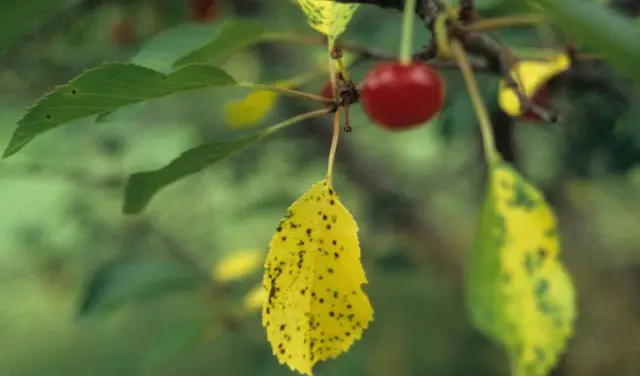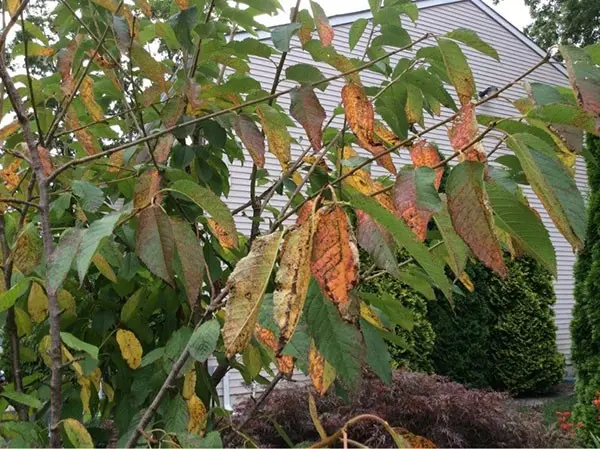Contents
Cherry does not bear fruit – many gardeners face this problem. Although the flowering cherry tree is very beautiful, it is still appreciated for its juicy fruits, and it is very unpleasant if you don’t wait for them to come out.
What year do cherries bear fruit?
In some cases, the lack of fruiting may be due to the tree being too young. The usual fruiting period for cherries is 3-5 years of life, depending on the variety and growing conditions. Fruits on its branches appear from June to early September – different varieties bear fruit at different times.
How many years does a cherry fruit
Another likely reason why cherries do not bear fruit is old age. After 15 years of life, the productivity of the tree decreases, fewer fruits are tied on the branches. Cherries after 20 years often completely cease to bear fruit.
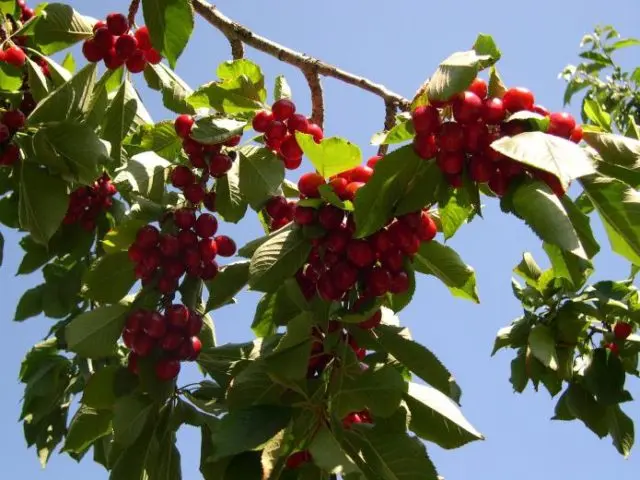
Fruiting does not occur in too young or old cherry trees
Will one cherry bear fruit
Many gardeners plant cherries on the plot alone, forgetting that most tree varieties are self-fertile. If a variety is not able to set fruit without pollinators, then even the best conditions will not make it bear fruit.
One cherry can bear fruit only in case of self-fertility. Self-fertile varieties include Mayak, Lyubskaya, Brunette, Annushka and some others.
Why cherry blossoms don’t bloom
Sometimes a cherry tree not only does not bear fruit, but does not even bloom. If flowering is absent in a young plant up to 3 years of age, then there is no particular cause for concern; before entering the fruiting period, this situation is quite normal.
But if the plant is already 5 years old or more, and it still does not bloom, or we are talking about an adult tree that has bloomed in previous years, then the gardener needs to worry. There are several main reasons for the lack of flowering in a fruit crop:
- Freezing of flower buds during the winter. This happens with heat-loving varieties, as well as with too mild autumn in the previous season. If the weather in October turned out to be excessively warm, then the cherry tree, which has almost passed into a state of rest, can “wake up” again and begin the growing season. Accordingly, when the winter cold sets in, the plant will be more vulnerable, and the flower buds will die from frost. In this case, next year the fruit crop will neither bloom nor bear fruit.
- Freezing of buds and buds in spring. If the usual spring frosts came very late, when the cherry was already fully awake and ready to bloom, then even frosts down to -1 ° C can cause irreparable damage to the tree.
- Lack of minerals and vitamins. Cherry often refuses to bloom in too poor soil. If the gardener has not fed organic matter and minerals for a long time, then the tree simply does not have enough strength to form buds, let alone ovaries.
- Diseases and pests. With poor care, cherries suffer from fungal diseases and harmful insects. Spores of diseases weaken the vitality of the plant and disrupt the biological cycle, and pests with a serious defeat can simply destroy green foliage and cherry buds in the middle of spring.
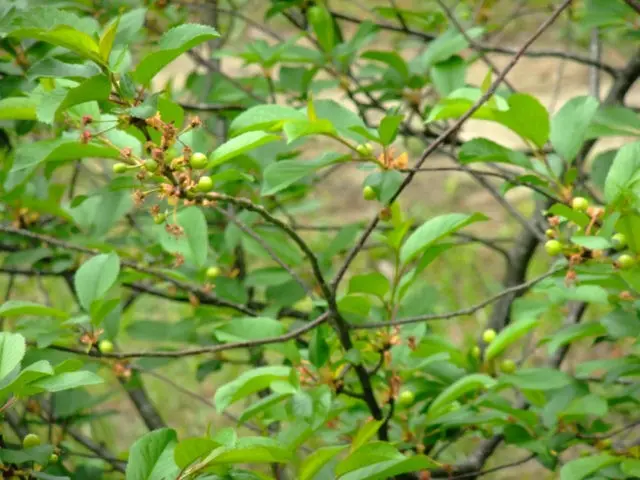
With improper care, the plant may not only not bear fruit, but even not bloom.
Improper watering, too rough pruning, or neglect of the annual haircut also lead to a lack of flowering. If the fruit crop refuses to bloom, then first of all it is necessary to solve this problem, only with normal flowering the tree will bear fruit.
Why cherries do not bear fruit well
Good flowering is not a guarantee that the plant will bear fruit. Sometimes in the spring, the cherry tree blooms very profusely, but never sets the fruit or drops the ovaries before they have time to develop.
Wrong choice of seedling
One of the reasons why cherries may not bear fruit is the initially wrong choice of seedling. Buying a variety that does not correspond to the weather conditions of the region. For example, cherry in the Moscow region does not bear fruit if it is intended for the southern regions, and it grows even more poorly in Siberia and the Urals. Cold weather in spring prevents flowering and fruit set, and part of the flower buds die in winter.
Buying a diseased or weakened seedling is another reason. If a plant from the nursery looks bad, has weak roots, or is infected with fungal diseases, then you can not expect fruiting from it.
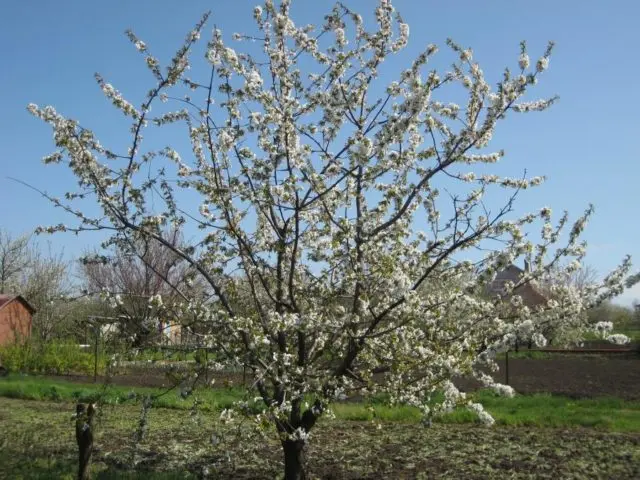
Cherry varieties need to be selected in accordance with the region
Improper care
Cherry is considered a hardy and fairly unpretentious tree. But careless care still often leads to the fact that the cherry sheds the fruit ovaries and refuses to bear fruit:
- If you do not pay attention to top dressing, then the cherry tree will quickly deplete the soil in the area. In this case, the plant will not have the strength to bear fruit. For the good development of the tree, it is necessary to annually introduce both organic top dressings and complex minerals into the soil.
- Excessive feeding can also lead to the fact that the cherry will cease to bear fruit. For example, oversaturation of the soil with nitrogen can turn out to be harmful – cherries will grow actively, but the level of fruiting and winter hardiness will decrease.
- Cherries do not bear fruit unless regularly pruned. If the crown of the tree is too dense, then the plant spends all its energy on maintaining shoots and foliage – there are simply no resources left for the ovary and development of berries.
- Improper pruning can limit fruiting. Some gardeners, out of inexperience, cut off annual shoots of a tree that are responsible for fruiting, or remove flower buds on biennial or three-year shoots.
- The quality of shelter for the winter greatly affects the yield. Even cold-resistant varieties must be mulched with a dense layer of organic matter in late autumn, and during severe frosts, cover the trunk with spruce branches or roofing material.

Irrigation and fertilizers play a big role in the fruiting of horticultural crops.
The culture ceases to bear fruit with too plentiful or insufficient watering. In the first case, the roots of the plant suffer, due to an excess of moisture, fungal diseases and rot develop. If there is not enough water, then the tree does not receive the right amount of nutrients.
Adverse weather conditions
With good care, the plant may also not bear fruit in some years. The reason is the unfavorable weather, namely:
- late spring frosts, if negative temperatures return at the moment when the cherry has already prepared for flowering and pollination, then the tree is unlikely to be able to bear fruit;
- warm autumn, even on frost-resistant varieties, flower buds can die in winter if, due to a long warm autumn, the cherry leaves too late;
- rainy spring, the process of pollination, and hence fruiting, depends on bees and other pollinating insects that do not fly in rainy weather.
Diseases and pests
Fungal diseases and harmful insects pose a serious threat to the cherry crop. Most often, cherries cease to bear fruit due to the following ailments:
- kokkomikoz – with this disease, the leaves of the tree become covered with brown spots, turn yellow and fall off, due to which the biological cycle is interrupted and fruiting does not occur;

- moniliasis – the disease affects the formed ovary and leads to its shedding, also with a monilial burn, the foliage and bark of the plant turn brown.

Plants affected by fungi and pests may not bear fruit.
Aphids, cherry fly, weevil and sawfly can cause the plant not to bear fruit. The listed pests eat away the leaves of the cherry tree or destroy the ovary, so you need to carefully monitor their appearance.
What to do if the cherry blossoms but does not bear fruit
If the cherry blossomed, but the fruits did not start, then first of all it is necessary to revise the growing conditions and the care algorithm:
- The plant ceases to bear fruit on unsuitable soils. If the soil on the site is too acidic, it must be treated with lime, chalk or ash to achieve soil neutrality. Also, the earth must be regularly loosened for good oxygenation and weeds must be removed in time.
- In the absence of fruiting, attention should be paid to watering, perhaps the cherry lacks moisture, or, on the contrary, the soil is swampy. In the first case, you need to increase the number of waterings and make sure that the soil remains slightly moist. In the second, reduce watering and organize good drainage in the area with the tree.
- Every year, the plant must be fed with nitrogenous fertilizers in the spring, and during the flowering period – with potassium and phosphorus. Fertilizers can be applied both mineral and organic, but in the spring you need to fertilize the tree 2-3 times.
Every season, the plant needs to be sanitary pruned – remove all dry, diseased and too old branches that are no longer involved in the formation of fruits.
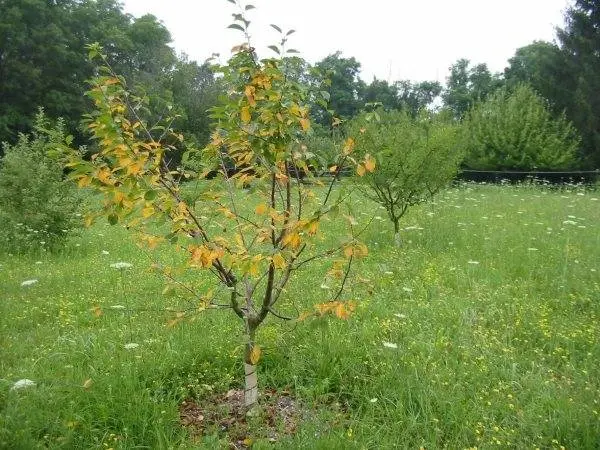
To wait for the fruits from the cherry tree, you need to be careful about the rules of care
How to make cherries bear fruit
If all the rules of care are followed, but still the cherry blossoms profusely, but there are no berries, then perhaps the reason is insufficient pollination. You can solve the problem in several ways:
- Plant pollinating varieties close to the cherry, it is possible that the cherries already growing on the site are not suitable for the role of pollinators in terms of flowering or are located too far from each other. New trees are highly likely to improve overall fruiting.
- Additionally attract bees during flowering. If beneficial insects do not pollinate the garden well, then during the cherry blossom period, the trees can be sprayed with honey solution or small containers with honey and jam can be hung on the branches. The sweet smell will attract the bees, and pollination will be better.
Also, before flowering, to improve the ovary, you can spray the cherry with a solution of boric acid – 10 vial of the product is diluted in 1 liters of water. After flowering, spraying with stimulants, for example, “Universal Ovary”, can be carried out.

It is possible to improve the quality of pollination artificially – by spraying with sweet solutions.
Preventive measures for abundant fruiting
By following a few simple rules, crop failures can be prevented and cherry fruiting can be constantly maintained at a good level. The gardener needs:
- choose the right plant seedling when buying – for the northern regions they buy frost-resistant varieties, for the southern regions they are heat-loving, it is also important to acquire a completely healthy plant;
- plant a tree on the right soil – it should be loose, moderately moist and with a neutral pH;
- water the tree in a timely manner, preventing the soil from drying out or stagnant moisture;
- regularly apply potash, nitrogen and phosphorus top dressings, as well as organic matter;
- plant several cherry varieties close to each other at once for cross-pollination;
- prune cherries annually so that the plant does not waste energy on feeding extra shoots;
- carefully insulate cherries before winter, paying special attention to mulching the near-stem circle – a layer of mulch should be at least 10 cm.
Cherries with late flowering show the most stable fruiting. Even if the spring is cold, the last frosts are over by the time the tree opens its buds.
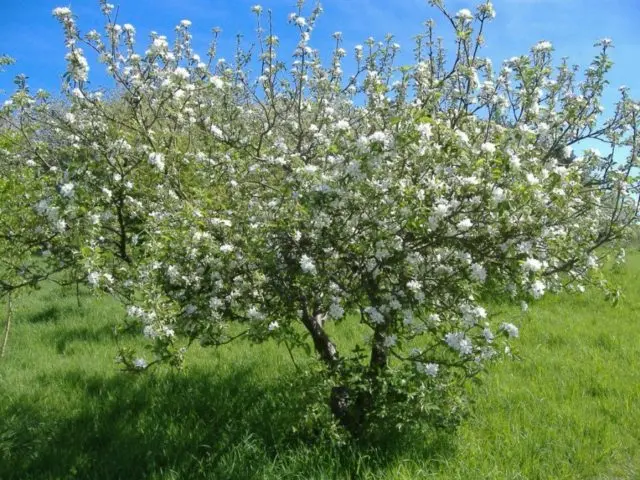
All factors affect the yield of fruit crops – soil quality, top dressing, pruning
Conclusion
Cherry does not bear fruit – many gardeners face this problem, and there are many possible reasons. By following the basic rules of care and by stimulating pollination, the yield can usually be returned to a high level.










